How To Get Rid Of Rust On Cast Iron
Every keen chef owns a cast iron skillet. Nothing gives quite as good a finish as this essential cooking tool. Cast iron retains heat more effectively than other metals, which helps provide a crispy, seared texture and better browning. However, over time cast iron becomes more tricky to clean — what once washed off easily wont shift with a sponge alone.
Before you know it, your pan is covered with burnt residue. Worry not, we've pulled together a guide on how to clean a cast iron skillet, so you can get it looking like new again. If you have an enameled cast iron skillet, skip to the end of the page as the cleaning instructions are different. This is because the enamel can be damaged by some of the abrasive methods recommended for cleaning exposed cast iron.
- Here are the best meat thermometers right now
- Here's how to season your cast iron skillet and how often
- Here's how to insulate your windows for winter
How often should you clean a cast iron skillet?
You should clean a cast iron skillet immediately after every use, so that any remaining residue doesn't have a chance to set.
What you will need
Paper towels or dry cloth
Non-abrasive dish soap (optional)
Non-abrasive sponge or cast iron cleaning brush
Vegetable oil
Raw potato (optional)
Kosher salt or rock salt (optional)
Wooden spatula (optional)
Unlike other cookware, you can't leave cast iron to soak or place it in the dishwasher, as this can cause rust. You should also avoid placing a hot skillet into cold water as this can 'shock' it and lead to warping and cracking. It's a good idea to give it a more thorough clean if you notice any burnt residue which won't shift, or what's worse, rust.
How to clean a cast iron skillet after everyday use
1. While the pan is still warm, rinse it under hot water and use a non-abrasive sponge or cast iron cleaning brush, such as the Full Circle Tenacious C Cast Iron Brush, to remove any residue. If you want to use dish soap, you can, but this could strip the seasoning, so only use a small amount of non-abrasive soap. Don't use steel wool as this can also strip the seasoning and scratch the pan.
2. Dry the skillet thoroughly using a cloth. Drying it is imperative as any remaining moisture will lead to rust. You can place the skillet back on the stove and let it heat to make sure any water has evaporated.
3. Using a paper towel or cloth, apply roughly one teaspoon of vegetable oil to the inside of the skillet, coating the cooking surface. Continue to buff until the oil is absorbed and you can no longer see it.
4. Let the pan cool completely before storing.
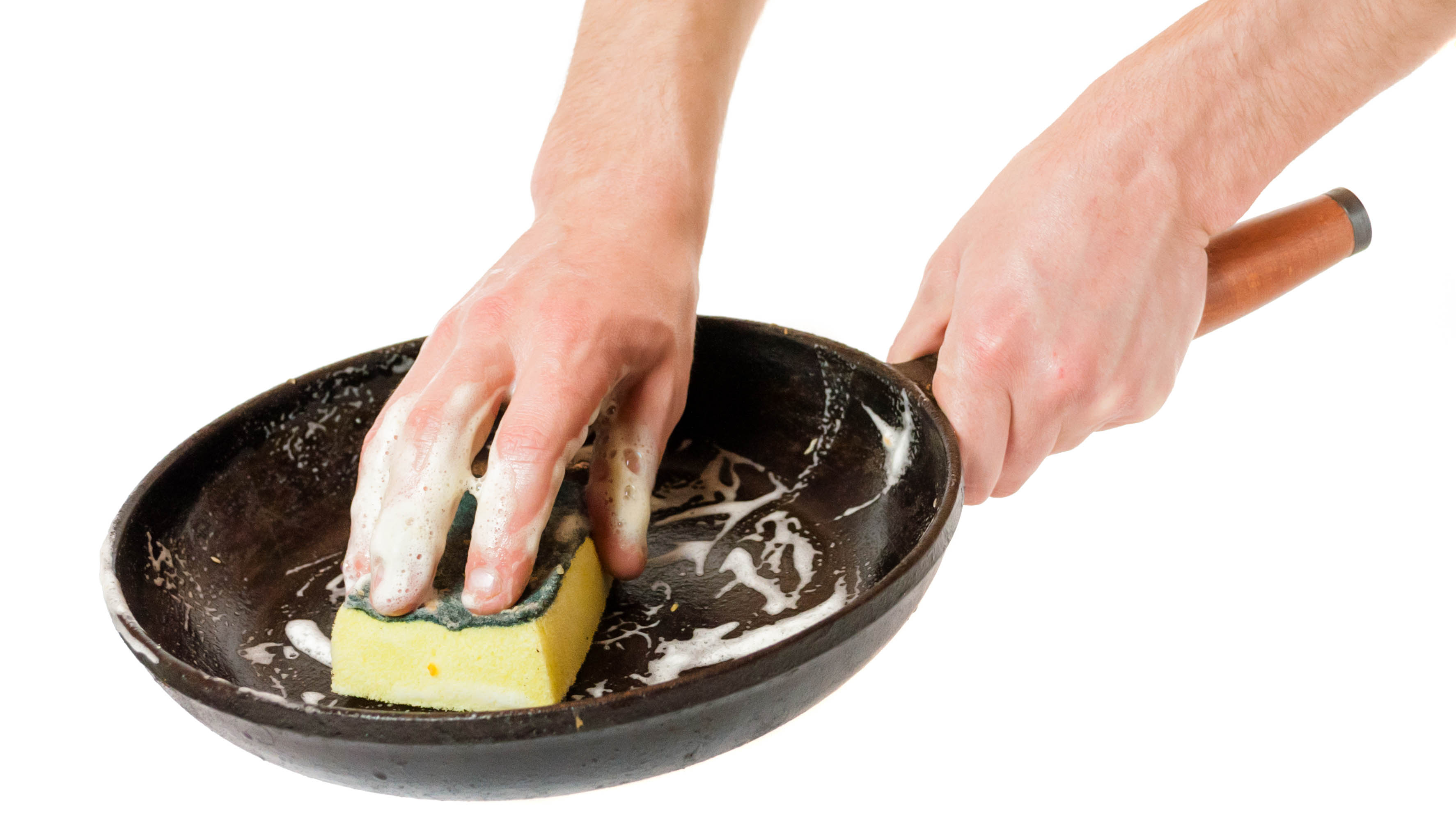
How to clean a cast iron skillet with burnt-on residue
If the above doesn't remove some of the burnt residue, follow these steps:
1. Mix some coarse Kosher salt with water (a tablespoon of each should be enough) and scrub at the burnt residue in a circular motion using your non-abrasive sponge or cleaning brush. If you're dealing with grill lines, then you will need to scrub in that direction. Then rinse, dry and oil following the everyday cleaning steps.
2. You can also boil water in your skillet to soften any stubborn residue before you attempt to remove it. Once emptied and while still hot/warm, use a wooden spoon or spatula to scrape away the residue.
How to clean a rusty cast iron skillet
There's nothing worse than discovering rust has covered your trusty cast iron skillet. This has happened because the pan has been exposed to water for too long, or wasn't completely dry when it was stored. But, don't worry, this can easily be rectified with a potato and some salt — yes, you read that right.
1. This can get a little messy so lay down some newspaper before starting.
2. Cut a raw potato in half. Make sure it's big enough that you can get a good grip on it.
3. Sprinkle a generous amount of coarse Kosher salt into the pan; a handful should be enough.
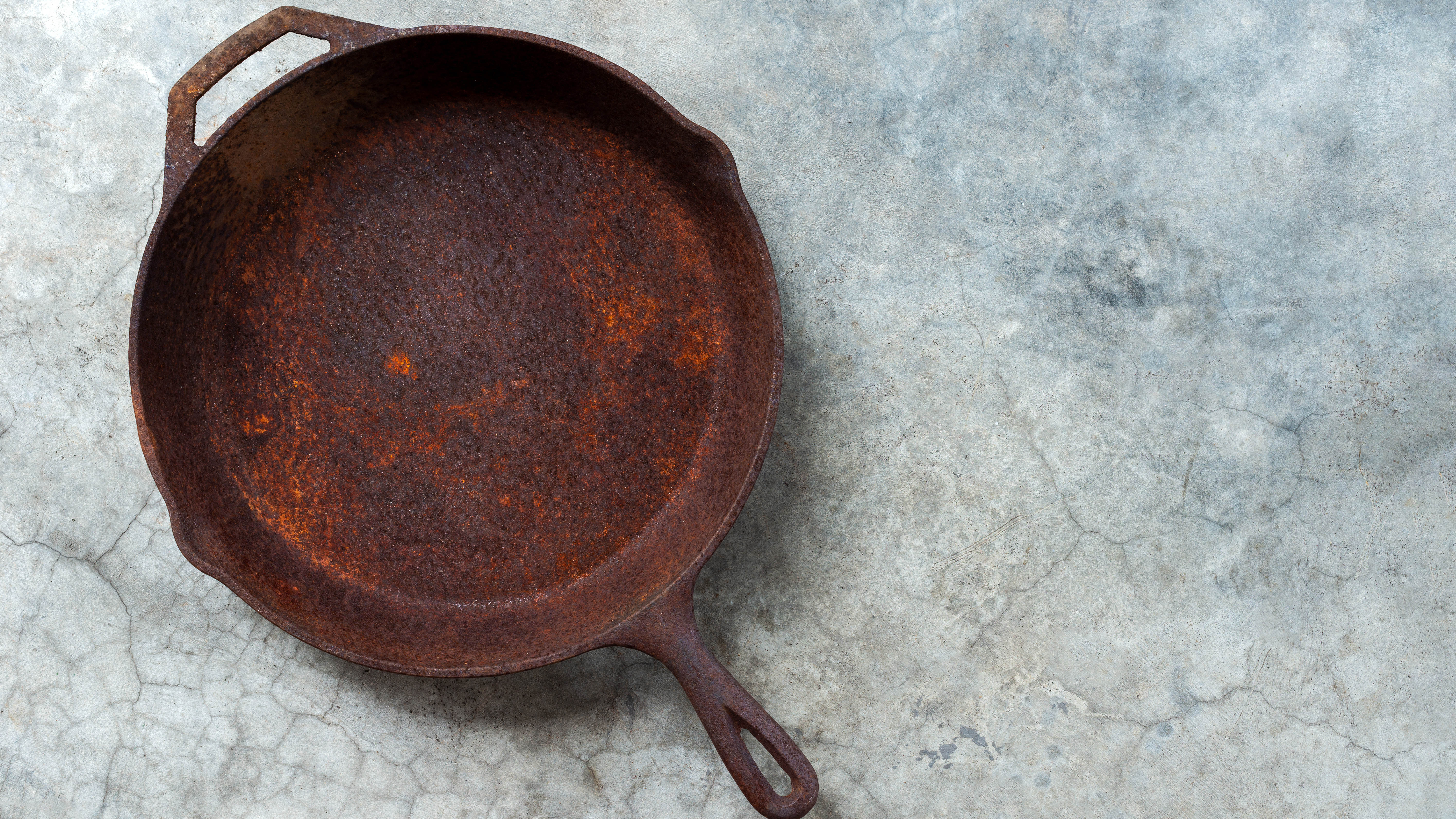
4. Place the potato flat side down into the pan and scrub in a circular motion. Make sure you give it a good amount of pressure and work your way around. Think of it as a facial for your skillet! If your pan has grill lines, you can cut an angle on the side of the potato so it can reach between the lines and scrub in an up-and-down motion.
5. The potato should provide enough moisture for the salt to work its magic, but if not you can add a small amount of water as needed.
6. The salt will start to brown as it picks up the dirt. If you've got a lot of rust, you may want to rinse the salt away and continue with a fresh batch.
7. Once the rust has disappeared, rinse away the salt and follow the everyday cleaning steps to dry and oil the skillet before storing it.
Your cast iron skillet should now be looking like new again — remember to keep oiling it after every clean.
How to clean enameled cast iron
Some cast iron pans have a colored, fully enameled exterior and interior, which makes them great to have on display and easier to clean as well. Here's how to clean enamelled cast iron.
1. For everyday cleaning, once it's cooled, the pan can be rinsed and cleaned using hot, soapy water and a sponge or soft brush. Some of these pans are dishwasher safe, however this can dull the enamel so we recommend sticking to hand washing.
2. For stubborn stains, you can mix up a paste of baking soda with water and use that to scrub the pan. It's mildly abrasive and wont damage the enamel.
3. For truly tough stains, you can also leave hot water to soak in your enamel cast iron pan for 20 minutes before following the everyday cleaning steps.
4. Dry the pan thoroughly before storing it. You do not need to season enameled cast iron with oil prior to storing.
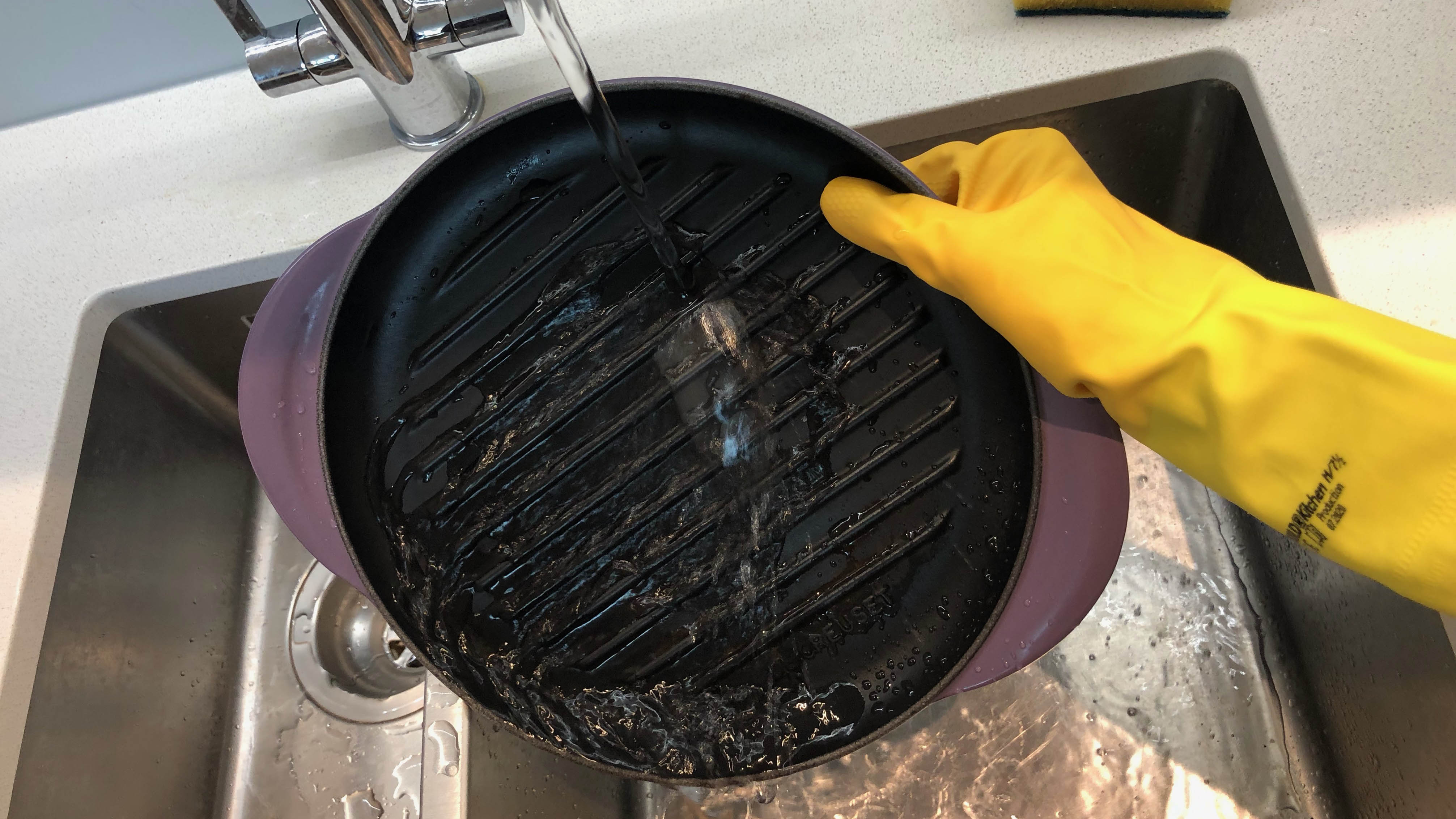
Unfortunately, the outside of enamed cast iron can easily show scorch marks which are hard to remove. Don't worry, as these can also be scrubbed away with a few household ingredients.
1. Mix up a paste of baking soda with water. You want the consistency to be thick and not too runny.
2. Turn your pan upside down and apply the paste to the scorch marks. You can use a paper towel to spread it, but I found it easier with my fingers.
3. Let it set for 3 hours.
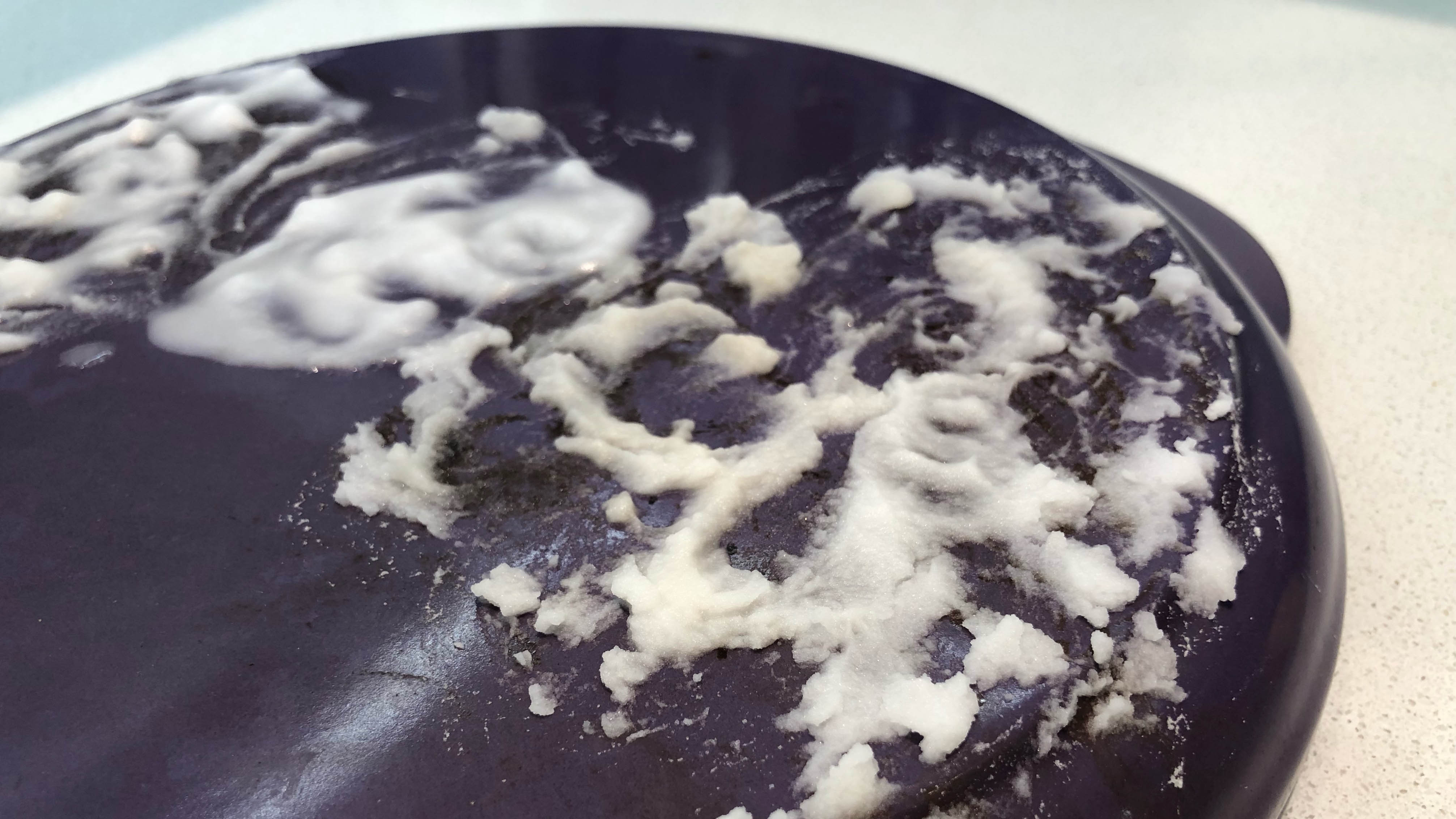
4. Spray the paste with white distilled vinegar. It will start to foam as the two react. Continue until the foaming stops.
5. Using the abrasive side of your sponge, scrub the exterior of the pan in a circular motion. It may require some elbow grease, but you will see that the scorch marks will start to shift.
6. Once the marks are gone, clean your cast iron pan in the sink. Then dry it following the above directions for everyday cleaning.
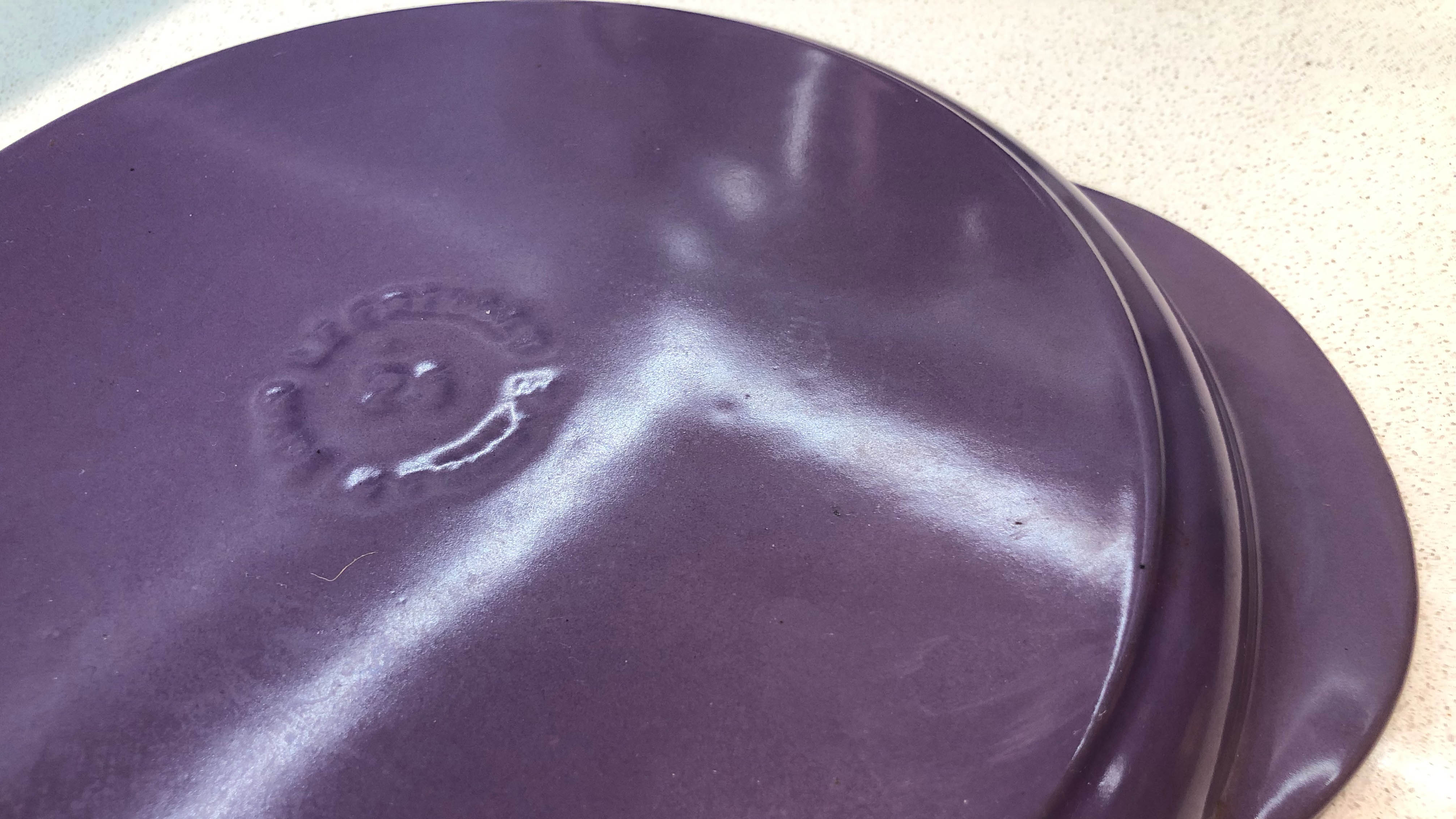
- Here's how to clean a dishwasher
- Or check out how to clean a washing machine
How To Get Rid Of Rust On Cast Iron
Source: https://www.tomsguide.com/how-to/how-to-clean-a-cast-iron-skillet-and-remove-rust
Posted by: flowersdowanceares.blogspot.com

0 Response to "How To Get Rid Of Rust On Cast Iron"
Post a Comment